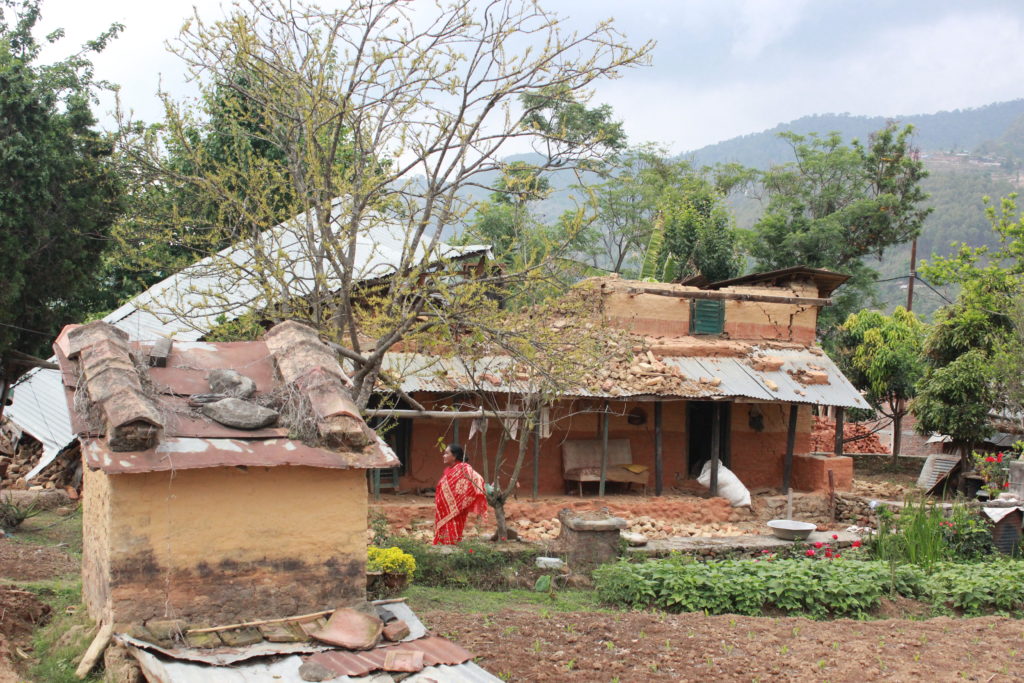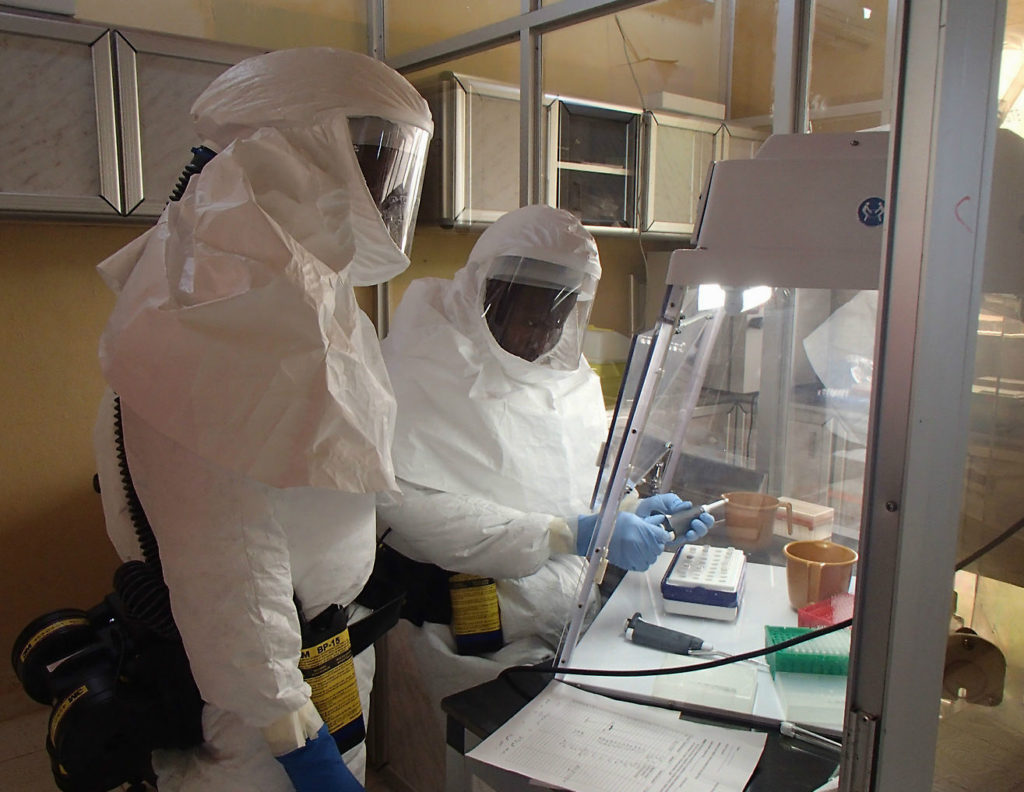Part 2: The Message
2.4 Danger! Danger! Crisis and Emergency Communication
Learning Objectives
- To describe and provide examples of characteristics of good crisis and emergency communication.
- To explore the steps that can be taken to prepare for crisis and emergency communication scenarios.

In a crisis or emergency, people take in information differently. We miss and misinterpret information, we can’t juggle multiple facts, we can’t remember as much as usual, and we often use emotion and heuristics (i.e., mental shortcuts) rather than logic to make decisions. We rely on our current beliefs and don’t seek or acknowledge evidence that contradicts what we think. We seek validation — we look to TV, peers, social media, and other outlets looking to see if the same information is being shared and if people are acting in the same way. We often believe the first message we see, and uncertainty, fear, and helplessness drive our actions. For this reason, crisis and emergency communication is distinct from other forms of risk communication and deserves special consideration.
Supplementary Material
CDC has literally written the (free) book on crisis communication — the Crisis & Emergency Risk Communication Manual. It sets forth six principles for effective crisis (and risk!) communication:
- Be first: The first source of information often becomes the preferred source of information.
- Be right: Accuracy establishes credibility, even when you can only acknowledge the unknown.
- Be credible: Do not compromise your
 honesty and truthfulness.
honesty and truthfulness. - Express empathy: Acknowledge suffering.
- Promote action: Give people meaningful things to do.
- Show respect: Respectful communication promotes cooperation.
Emergency and crisis communication
Some people make a distinction between emergency and crisis communication. Although both are times of intense difficulty or danger, a crisis can sometimes be predictable and prolonged (e.g., the opioid crisis), while an emergency is by definition ‘unexpected’. However, we find that they share enough common ground that it is more effective and succinct to discuss them as one topic.
Before we delve into the specifics, there are two important points that merit discussion:
- Crisis and emergency (we will call it C/E) communications are inextricably linked with preparation and response activities and there is a lot (and I mean A LOT) of information, training, and expertise about emergency management and response. Indeed, we would suggest that this is a subject area in and of itself and beyond the scope of this course. So, consider the information included here to be a taste of what is involved should you be called upon unexpectedly to participate in C/E communication. If you know that this will be part of your role, then you need to seek out the appropriate education and training.
- Although we have said that C/E communication is distinct and unique, this does not mean that you should disregard everything else that you know about communication. Rather, it simply means that you need to add additional tools to your toolbox, change the way you use your existing tools, and potentially adjust your priorities, expectations, processes, etc.
Characteristics of good crisis messaging
Good C/E communications is the ultimate combination of style and substance. Style is important because as people get anxious, stressed, and overwhelmed they have decreased ability to compute facts, so they increasingly rely on the credibility and likability of the messenger to determine what they will listen to. But substance is also important because once you have people’s attention, you need them to understand and act — and fast!
With regard to C/E communication style:
Lundgren and McMackin helpfully highlight three ‘Cs’: calmness, competence, and compassion. Think also about who is doing the messaging. In times of uncertainty, people will be more likely to listen to individuals and institutions that they already trust. No matter who you are, people are more likely to trust you and listen to you if you are accessible. Accessibility can take many forms ranging from face-to-face contact to being responsive to questions and concerns through social media.
With regard to substance:
- Be the first to communicate and communicate regularly (err on over- versus under-communicating). Communicate in real-time as much as possible.
- Information should be honest and accurate. Aim for total candor and transparency. Don’t lie, and don’t tell half-truths. Stop rumours and speculation by addressing them.
- Messages should be clear, simple, specific, and short. Focus on what people need to know or do. But, you also need to make sure that people have all the information that In crisis communication, your goal is not just to deal with the emergency, but also to be the #1 source of credible information and facts.they need to act on your message. For example, don’t tell people to evacuate if you have not told them where they can go and where their pets and livestock should go.
- Repeat messages over and over and over. This is a time when people are least annoyed by repetition.
- Use consistent messaging but also know that things will change; clearly acknowledge it when they do, describing what has changed and why.
- Change (e.g., initially telling them the risk is high and then finding out that it is lower than you thought) is different from evolution. Your communication should evolve as the emergency and response evolves. For example, initially people want information about the risk they are facing and how they can protect themselves, and they are mainly focused on basic needs (shelter, food, water, safety). Later on, when things have stabilized, they may want more information on the response, long-term implications, and details of the crisis and emergency (a sort of debrief).
- Acknowledge when people are afraid. Don’t over-reassure or state/imply that fear is illegitimate or unwarranted.
- Give people something to do. Better yet, give them a choice of actions (i.e., what they must do, what they should do, what they can do). As much as possible, allow people to choose their own actions (versus forcing them to do something).
- Consider asking more of people than just taking care of themselves. The public has the ability (and demonstrated track record) of ‘stepping up’ to help out in times of emergency.
- Be transparent about uncertainty, obstacles, dilemmas, and errors but also be clear about how you are working to address them.
- Acknowledge opinion diversity but also be willing to make decisions quickly and justify those decisions.
- Be willing to speculate and tell people what they might expect or experience going forward.
- Centralize information as much as possible. Avoid duplication and competing messaging unless that is part of your plan (i.e., sending messages out through multiple platforms).
Ultimately, the best thing you can be in a time of emergency is be prepared. When all hell breaks lose, you want to be focusing on the situation at hand rather than on coordinating among different responders, establishing roles and responsibilities, etc.
Example
“Stay away from downtown and the bridges”
His exceptional crisis communication skills during the 2013 Calgary flood turned Mayor Nenshi into a folk hero. He employed a number of C/E communication tools, such as the repetition of clear, simple, specific, and short messages.
- Naheed Nenshi
- Flooded East Village area of Calgary
Considerations for emergency communication preparedness
Preparation is the key to C/E communication success. The following are some general areas in which preparation will help you have a more efficient and effective response:
- Identify which individuals and organizations will be involved in a response and determine how these groups will coordinate and collaborate.
- Determine roles and responsibilities among organizations, and within your own.
- Consider involving the public, particularly established community organizations such as local government, churches, hospitals, schools, and community centers in both the planning and response.
- Develop a process for the rapid development, verification, and approval of messages.
- Determine how you will distribute information keeping in mind that you should use multiple approaches and platforms to get as wide a reach as possible.
- Redundancy and back-up planning is also important if the emergency impacts your communication tools (e.g., too many people visiting crashes a webpage). Along these lines, consider low-tech methods such as flyers and radios, which are resilient to technology breakdowns.
- Media must be part of your plan to distribute information, if for no other reason than the fact that they will report on the emergency with or without you. Consider developing a relationship with your main media outlets, including a contact list and procedure for after-hours reporting.
- Identify how you will receive, analyze, and respond to information from the public. This is important so that you can know what is happening and also so that you can address people’s concerns. In the past, this was mostly done through hotlines, but increasingly social media and crowd sourcing of information is playing a role. The Mark Yourself Safe initiative by Facebook is a great example of the role that social media can play in crisis communication and crowdsourcing of information was used to assess damage and what aid was needed after the 2015 earthquake in Nepal.
- Determine if there are any segments of your target audience who need special consideration. Are certain people more at risk than others? Less likely to receive or understand the message? Less capable of responding, etc?

Takeaways
Key Takeaways
- Crisis and Emergency Communication is a field distinct from “regular” risk communication; however, most of the principles of science and risk communication still apply (e.g., thinking about style and substance – see 2.5 Style vs. Substance for more on this).
- Emergencies are a time of high emotion and low rationality. For this reason it is important to be calm but compassionate and complete but clear and concise.
- Other tools that aid in C/E communication include communicating early and often, repetition, honesty/transparency, and empowerment through action.
- Don’t wait for a crisis to develop your C/E communication strategy. Preparation is the key to success.

Media Attributions
- Fig 2.2.1 Giuliani_at_Ground_Zero_(1) © Robert D. Ward is licensed under a Public Domain license
- Fig 2.2.2 Army researcher fighting Ebola on front lines © Army Medicine is licensed under a CC BY (Attribution) license
- Fig 2.2.5 Nepal_Earthquake_(64) © Rajan Journalist is licensed under a CC BY-SA (Attribution ShareAlike) license
- Cover rat © Sunita LeGallou





